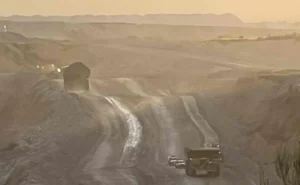Who benefits? Owners
The Trump administration proposes to force the markets to provide guaranteed profits to coal-fired power plants and nuclear plants that are failing in the competitive wholesale electricity markets. Although the proposal is thin on details, it would amount to a bailout. This primarily benefits the owners of US coal mines by paying the uneconomic coal-burning power plants upwards of $5 billion per year to keep burning coal from those mines.
The power plant owners will also have larger profits in the short-run.
Power plant owners of course understand these coal plants are uneconomic—which is why they are looking for someone to pay them to keep them online. Before the Trump DOE came along, West Virginia went through this in 2013 with the Harrison power plant, which has cost consumers more than $164 million so far. Now Harrison’s owner, FirstEnergy, is attemptingthe same thing with its Pleasants coal plant.

The track record of coal mine owners in protecting the jobs and health of coal miners is abysmal; spending money to keep coal-burning plants open is not a great policy for the communities in coal country. While purporting to support coal communities, the administration simultaneously proposed to cut federal budgets that support those communities.
Who pays? Trapped consumers
Bending the markets to require profits be given to a few plant owners is an awful idea. When the Administration rejects the markets’ results to favor a few political supporters, every business owner and every consumer should consider themselves under attack. Electricity is not a luxury or an option for our society.
The government needs a very clear explanation if the captive customers paying unavoidable electric bills are suddenly required to pay billions more in costs each year.
While FERC and state regulators do have the authority to approve rule changes that increase payments to existing power plants, using good policy to reduce the cost of an expensive change would be the responsible choice. Unfortunately, the debates are tilted against consumers.
How much money?
Estimates for increased payments to generators run in a range from $2.4 billion to $10.6 billion annually for payments under the proposed rule—but that does not include the pollution impacts. UCS offered FERC an initial estimate of costs due to increased CO2 emissions by calculating the CO2 emissions from existing coal-burning generators that appear to be eligible for the payments proposed by the DOE.
UCS found over 50 GW of existing coal capacity that would potentially be eligible for the proposed subsidy and included only those that were located within energy markets of PJM, MISO,NYISO, or ISO-NE, and that are known to be presently subject to market competition.
Using their 2016 CO2 emissions, the coal plants potentially eligible for payments under the DOE Proposal create annual costs of about $9 billion from emitted CO2. Impacts from other pollutants will make this higher.
What’s wrong with the DOE proposal?
The proposed rule submitted by the DOE is worse than vague about benefits to reliability or “resilience.” The DOE proposal has not defined the need for a set of services, not defined the services, and not defined the performance improvements sought or expected from generators eligible for proposed payments.
The DOE has not supported its proposal with evidence, nor is it supported by the body of science-backed reports that have been published in recent months, many of which were funded and directed by the DOE. The National Academy of Sciences described how to improve in electric system resilience, and the DOE ignored that, too.
The Federal Energy Regulatory Commission should not approve this proposed rule with this lack of evidence and detail regarding impacts on consumers and reliability.
Further, the DOE proposal fails to define resilience. This is sufficient reason for FERC to reject the proposal. Where “essential reliability services” have been defined, those capabilities can be provided by solar, wind, and storage.
Demonstrations of solar generation capabilities to provide “essential reliability services” have recently been published by the California ISO, California Energy Commission, National Renewable Energy Laboratory, and First Solar.
Earlier documentation of wind generation capacity providing reliability and ancillary services has been made by NREL, and deployed commercially by Xcel operators in Colorado.
Is the DOE wrong in claiming reliability is being affected?
Yes. The retirement of power plants in the RTOs/ISOs has not diminished the reliability of the electric power system, and DOE has not supported its claim that retirements of uneconomic creates a reliability impact.
Reliability is closely watched, with regular comprehensive reviews provided by NERC. The DOE proposal contradicts NERC and does so despite the fact that the NERC reliability assessment is cited in the DOE Staff report. NERC’s State of Reliability 2017 report states that the bulk power system is reliable today despite the recent plant retirements.
Resilience (and reliability) for the electric power system are desirable goals for the economy and the well-being of everyone—but without a definition and means to evaluate the contribution to serving such goals, a policy or expense cannot be justified.
A better approach is to invest small, distributed resources for the grid, given that the vast majority of customer outages are due to disturbances on the transmission and distribution systems and not the shortage of fuel at large power plants.
UCS continues to actively engage in the FERC and regional debates over the DOE proposal. Stay tuned for updates.
Mike Jacobs, senior energy analyst at the Union of Concerned Scientist










